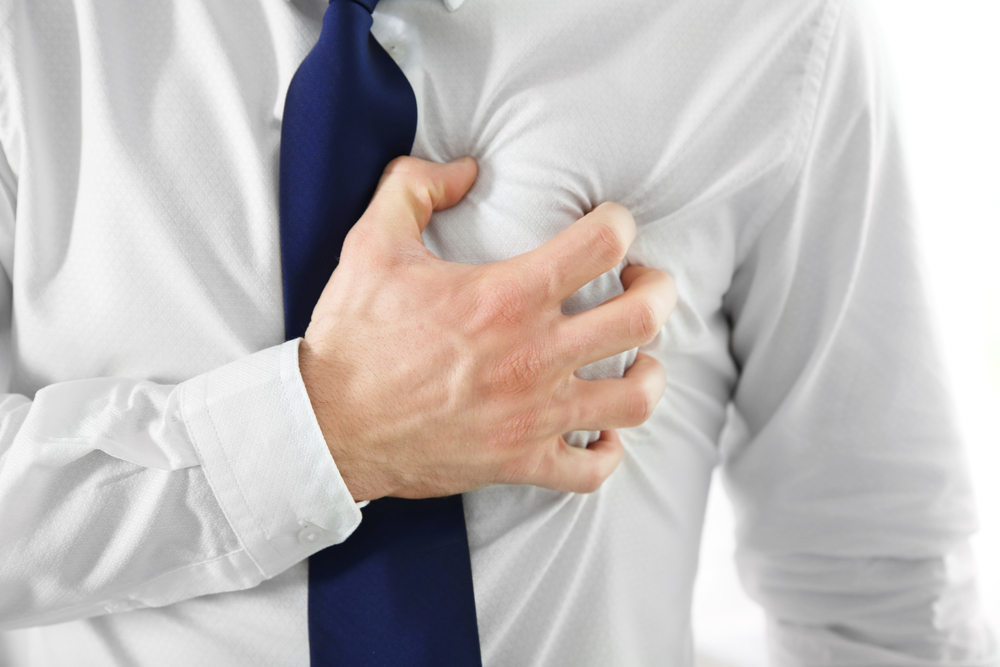Contents:
- Medical Video: Heart Attack or Stroke?
- Of the causes, strokes and heart attacks are different
- Causes of a heart attack
- Causes of stroke
- Do not mistaken the symptoms of a heart attack with symptoms of a stroke
- Symptoms of a heart attack
- Symptoms of stroke
- Differences in treatment of heart attacks and strokes
- Handling a heart attack
- Handling stroke
Medical Video: Heart Attack or Stroke?
Many people are often mistaken when distinguishing strokes and heart attacks. Though both require different handling. Although these two medical conditions often occur suddenly but each has different symptoms. So, how to distinguish the symptoms of a heart attack from a stroke?
Of the causes, strokes and heart attacks are different
Causes of a heart attack
Heart attack is a medical condition that occurs due to narrowing of the coronary arteries (blood vessels that are in charge of supplying blood to the heart) so that blood flow becomes very limited and stops.
Blockage of the coronary arteries can occur if the blood cholesterol level is too high and eventually clogs the bloodstream. This condition makes the blood circulation slow down until it stops completely.
Causes of stroke
The most common type of stroke is ischemic stroke. Ischemic stroke occurs when the blood vessels responsible for supplying blood to the brain are blocked by frozen blood. The causes of ischemic stroke are as follows:
- Blood clots occur in the arteries found in the brain, this can cut blood circulation to the brain.
- There is a buildup of plaque in the carotid artery (in the neck area) which is responsible for carrying blood to the brain, then the plaque is released and goes to the blood vessels in the brain, which eventually results in a stroke.
Another type of stroke is hemorrhagic stroke. This condition occurs when blood vessels in the brain rupture and blood spills into the surrounding tissue. Leaking blood then builds up and blocks the surrounding brain tissue. One risk factor is high blood pressure where it suppresses the arterial wall causing hemorrhagic strokes.
Do not mistaken the symptoms of a heart attack with symptoms of a stroke
Indeed, sometimes the symptoms of a heart attack and stroke have similarities making it difficult to distinguish when symptoms appear. But actually, you can distinguish the signs of these two diseases by paying attention to the following:
Symptoms of a heart attack
The most common symptoms of a heart attack, namely:
- The chest feels painful and uncomfortable
- There is a feeling of discomfort in the upper body area
- Hard to breathe
- Cold sweat appears
- Fatigue
- Nausea and vomiting
- Mild headache
Symptoms of a heart attack can vary in each person, even some of them do not show any symptoms. While others experience symptoms of mild to severe heart attacks.
Most heart attacks occur suddenly but many people get "warnings" of heart attacks for hours, days, even weeks before.
Symptoms of stroke
Symptoms of stroke are visible, depending on which part of the brain is damaged. Stroke sufferers can experience a number of problems with memory, speech, muscle control, and various other functions.
Common stroke signs, including:
- Suddenly feeling numb or weak in the area of the face, arms, or legs that tends to occur only on one side of the body
- Difficulties in speaking or understanding the conversation
- Difficulty seeing with one or both eyes
- Sudden severe headaches, sometimes accompanied by vomiting, dizziness, and changing consciousness
- One side of the face looks "sagged" and does not function
- One arm is weak and numb
The American Stroke Association recommends the F.A.S.T method to make it easier for you to identify signs of stroke:
- F (Face or Face): When smiling, does one side of the face feel down or "down"?
- A (Arms or Arms): When you lift both arms, is one of the arms drooping limply and falling down?
- S (Speech or Talk): Is your speech unclear, like slurred or nasal? Are there difficulties when talking?
- T (Time or Time): It is better to immediately call 911 or visit the ER at the nearest health service, if you experience this
Differences in treatment of heart attacks and strokes
Handling a heart attack
The healing process of a heart attack needs more than just treatment and a healthy lifestyle change. In certain cases, heart baypass surgery (Coronary Artery Baypass Graft) and angioplasty may be needed.
During the process of heart bypass surgery, the doctor will take blood vessels from other parts of your body and attach them to the blocked artery. This will change around the clogged part of the arteries.
Whereas in the angioplasty process, it is done by using a catheter that has a small balloon at the end. Then the catheter is inserted into a blood vessel, so the balloon will expand in the area where the blockage occurs. The balloon will press against the artery wall to trigger the opening of blood flow.
After the process is done, you are required to do cardiac rehabilitation. Usually, this lasts for several weeks accompanied by monitoring of diet, lifestyle, and medications to restore heart health.
Handling stroke
Usually, doing a healthy lifestyle is highly recommended during a stroke. If an ischemic stroke is detected within a few hours of the symptoms appearing, maybe the doctor will give a drug called tissue Plasminogen Activator (tPA), its function is to break the blood clots in the blood vessels.
While in some cases of hemorrhagic strokes, surgery needs to be done to repair damaged blood vessels. In some cases, the doctor will use a special clip to secure the part of the broken vein.
To find out which conditions you experience, you should consult a doctor. That way, you can get the right and fast treatment according to your conditions.













